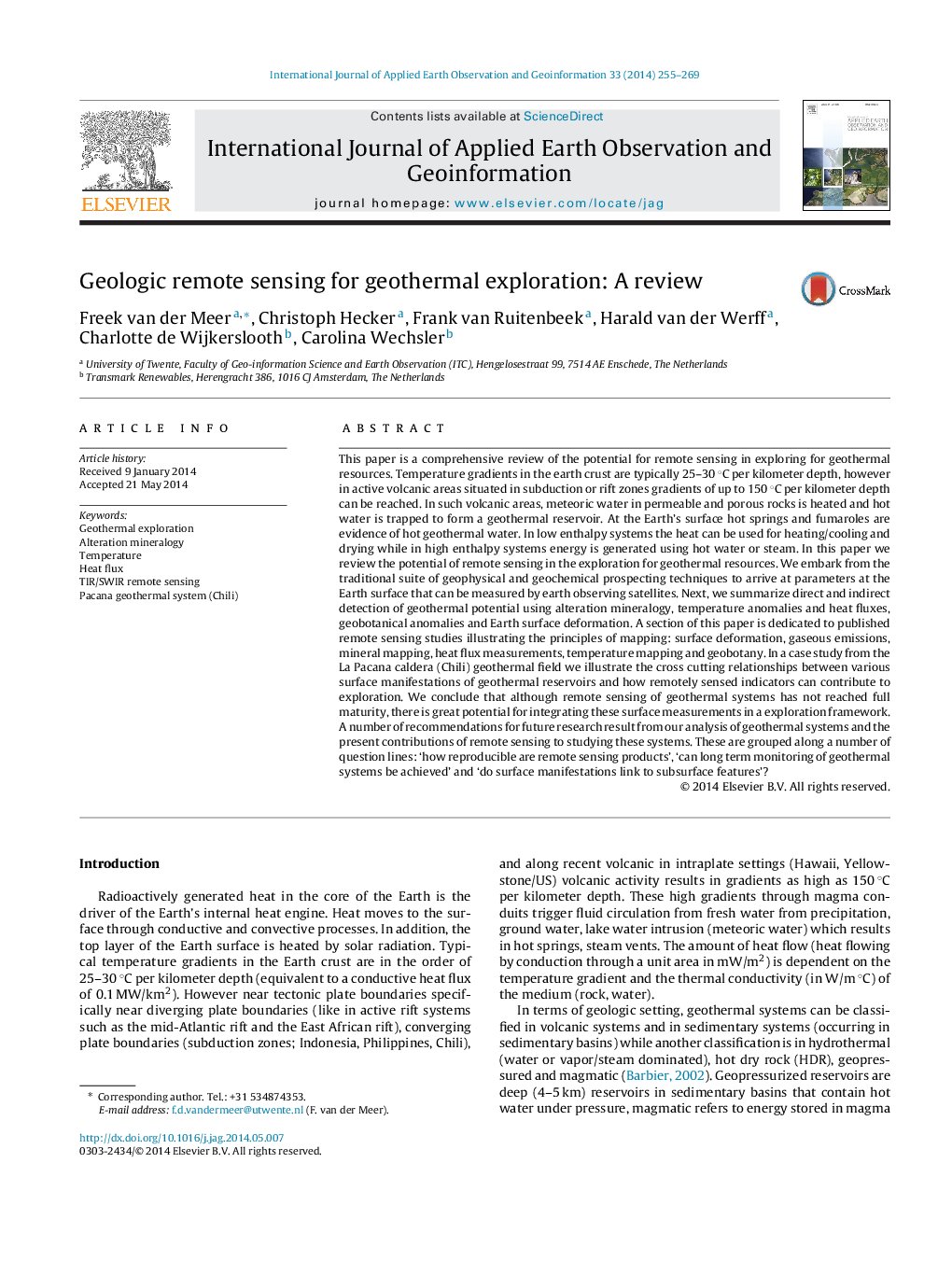| کد مقاله | کد نشریه | سال انتشار | مقاله انگلیسی | نسخه تمام متن |
|---|---|---|---|---|
| 6348863 | 1621826 | 2014 | 15 صفحه PDF | دانلود رایگان |
عنوان انگلیسی مقاله ISI
Geologic remote sensing for geothermal exploration: A review
ترجمه فارسی عنوان
سنجش از دور زمین شناسی برای اکتشاف زمین شناسی: یک بررسی
دانلود مقاله + سفارش ترجمه
دانلود مقاله ISI انگلیسی
رایگان برای ایرانیان
موضوعات مرتبط
مهندسی و علوم پایه
علوم زمین و سیارات
کامپیوتر در علوم زمین
چکیده انگلیسی
This paper is a comprehensive review of the potential for remote sensing in exploring for geothermal resources. Temperature gradients in the earth crust are typically 25-30 °C per kilometer depth, however in active volcanic areas situated in subduction or rift zones gradients of up to 150 °C per kilometer depth can be reached. In such volcanic areas, meteoric water in permeable and porous rocks is heated and hot water is trapped to form a geothermal reservoir. At the Earth's surface hot springs and fumaroles are evidence of hot geothermal water. In low enthalpy systems the heat can be used for heating/cooling and drying while in high enthalpy systems energy is generated using hot water or steam. In this paper we review the potential of remote sensing in the exploration for geothermal resources. We embark from the traditional suite of geophysical and geochemical prospecting techniques to arrive at parameters at the Earth surface that can be measured by earth observing satellites. Next, we summarize direct and indirect detection of geothermal potential using alteration mineralogy, temperature anomalies and heat fluxes, geobotanical anomalies and Earth surface deformation. A section of this paper is dedicated to published remote sensing studies illustrating the principles of mapping: surface deformation, gaseous emissions, mineral mapping, heat flux measurements, temperature mapping and geobotany. In a case study from the La Pacana caldera (Chili) geothermal field we illustrate the cross cutting relationships between various surface manifestations of geothermal reservoirs and how remotely sensed indicators can contribute to exploration. We conclude that although remote sensing of geothermal systems has not reached full maturity, there is great potential for integrating these surface measurements in a exploration framework. A number of recommendations for future research result from our analysis of geothermal systems and the present contributions of remote sensing to studying these systems. These are grouped along a number of question lines: 'how reproducible are remote sensing products', 'can long term monitoring of geothermal systems be achieved' and 'do surface manifestations link to subsurface features'?
ناشر
Database: Elsevier - ScienceDirect (ساینس دایرکت)
Journal: International Journal of Applied Earth Observation and Geoinformation - Volume 33, December 2014, Pages 255-269
Journal: International Journal of Applied Earth Observation and Geoinformation - Volume 33, December 2014, Pages 255-269
نویسندگان
Freek van der Meer, Christoph Hecker, Frank van Ruitenbeek, Harald van der Werff, Charlotte de Wijkerslooth, Carolina Wechsler,
